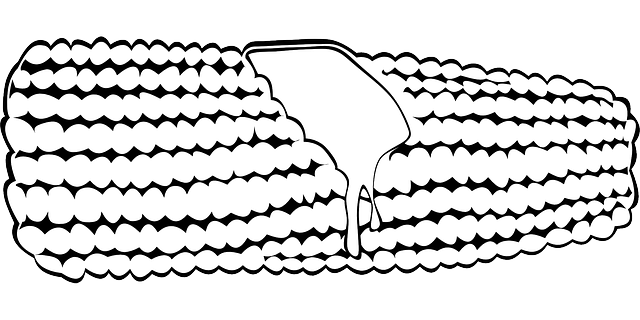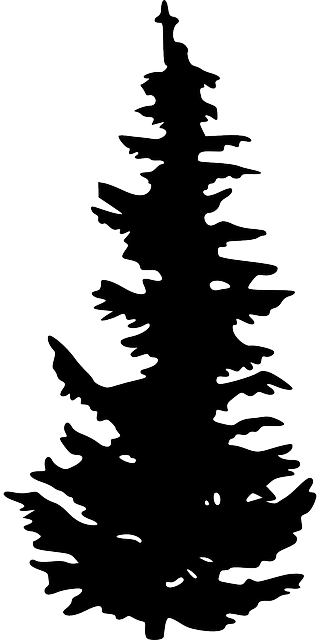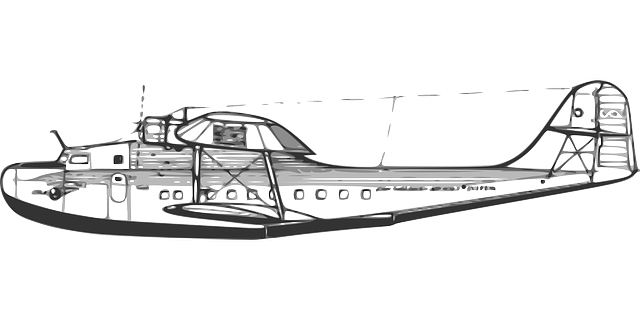تعليم غير نظامي
التعليم غير النظامي هوتعليم عن بعد بين التعليم الرسمي والتعليم غير الرسمي. هومُكَمل ورديف لمنهج التعليم النظامي، ولكنه يختلف عنه بعدة أمور:
- ليس إلزامياً، يختار الأشخاص الحضور أوالتغيب ، لذا يجب حتىقد يكون بغاية المتعة.
- لا يوجد منهج ثابت ، لا يوجد امتحانات. الأشخاص يختارون ما يودون تفهمه أوتجريبه.
- لا يوجد تعليم بالشكل التقليدي (أي مدرس ومتلقي)، إذا حب الفهم هوالدافع الأساسي للزيارة.
- لا يوجد جدول زمني. بإمكان الزائري التفهم بالسرعة التي تناسبهم. وبشكل خاص الأطفال الصغار يحصلون على الفهم بتكرار الشيء عدة مرات حتى يشعرون بالثقة.
ويسمح التفهم غير النظامي بذلك لعدم وجود مناهج محددة. هونشاط مشهجر وجماعي، من الأفضل ممارسته ضمن مجموعة، مع العائلة أومع أطفال آخرين. يقدم طرقاً وأساليب مختلفة للتفهم. التفهم غير النظامي يكمل التفهم النظامي وإن الهدف المشهجر هوبناء عقول حرة وناقدة وتطوير الطاقات من أجل العمل ومهنة المستقبل. وقد تم اختبار التفهم غير النظامي في أماكن كثيرة في العالم.
الاستخدامات
Formal education organisations are increasingly recognising non formal learning in assessment processes such as recognition of prior learning, or recognition of informal learning.
الهند
In India, non-formal education has to be seen in two contexts. Viewed from a broad perspective, non-formal education activities would include a large variety of programmes operating in different sectors of life such as health, agriculture, family welfare, and literacy development. In this sense, it falls within the definition given by Joan Harbison. However, seen from another perspective, nonformal education refers to India's programmes for achieving universal elementary education through part-time programmes for children of school-going age. Looking at the total gamut of activities in the sphere of non- formal education in India, one can classify them in three categories. One is the area of adult education, which clearly falls within the broad framework of non-formal education, considering its objectives and methodology of organization and implementation. A second set of activities which are also largely meant for adults cuts across sectoral barriers as they include agricultural extension activities, family welfare promotion activities, general awareness development programmes and so on. This represents an omnibus set of educational activities related to different developmental sectors which are undertaken by government as well as nongovernmental organizations. The third set of activities are exclusively in the area of elementary education. In fact, it is this set of activities which has gained the specific connotation among professionals in India as non-formal education. In line with the above broad classification, researches in non-formal education can also be looked at as belonging to three categories. A cursory review of all researchers in the area of non-formal education conducted in India reveals that more than 50 per cent of them are in the area of adult education. In a way, this is understandable, as adult education programmes have a relatively long history in India. The balance of studies is more or less equally di- vided among programmes for elementary education and others. Reviewing the 50 and odd researches on non-formal education completed in the country till 1983, Palsane and Rastogi (1983) sounded a note of high optimism, stating that his area is now attracting the attention and interest of research workers. However, the relatively small number of research studies that have got added to this area since then does not reflect a high degree of enthusiasm among researchers. Nevertheless, the quantum of researches in the field of non-formal education has shown an increasing trend and needs to be dealt with in some detail. It is in this context that the present volume deals with this area under two sections: one exclusively devoted to researches on adult education; the other, the present one, to a review or researches belonging to the other two categories mentioned earlier. In all, about 40 studies have been reported in the area of non- formal education since the time research activities in education started in the country. Of these, about a half relate to elementary education and the rest refer to a wide range of subjects such as social education, health education, agriculture education and so on. Some researchers have focused only on rural areas while some others focus only on NFE in urban areas; some studies can be considered as impact studies while certain others are simple surveys. Keeping these differing concerns of the researchers in view, an attempt has been made in this report to present an overview of researches under different sub-headings such as Non-Formal Elementary Education, Social Education, Need Survey for NFE, NFE and Systems Approach, NFE for Farmers, NFE for Rural Women and Impact of NFE Programmes. The number of studies under each of these categories is very small, except in case of studies on NFE at the elementary stage, and, therefore, they do not lend themselves to elaborate trend analysis of each aspect separately. Combining them for analysis would also not be justifiable as it would mean ignoring the differing concerns of the researchers. Also, considering the small number of studies in each area, one cannot make any critical observations on the content and method of the studies; rather, the attempt has been only to present a broad review of the studies in each of the subareas listed. The last section of the paper includes certain general observations about the nature of the studies conducted, pointing out the gaps and indicating the dimensions of non-formal education which need to be researched in greater detail and depth.
التعليم الأساسي غير النظامي في الهند
The need for and utility of organizing elementary education programmes outside the framework of full-time formal schools was articulated by R.V. Parulekar several decades ago, even before India became independent. He advocated the initiation of a programme of part-time education to cater to the educational needs of children who fail to benefit from full-time schooling facilities. But the proposal seems to have fall-in largely on deaf ears as far as educational policy makers were concerned. The issue was raised again, in a fairly effective manner, only during the mid-sixties, by the Education Commission, 1964-66. The Commission recommended the adoption of a flexible programme of part-time education at the elementary stage, the content of which had to be determined according to the needs and aptitudes of the learners. In fact, the commission expected the part-time education programme to be instrumental in raising the educational level of the average citizen. This was to be achieved by making part-time education for one year compulsory for all children in the age-group 11-14 who have not completed the lower primary stage and are not attending schools. The aim will be to make these children functionally literate.
In spite of the strong recommendations made by the Education Commission, 1964-66, no provision for any programme of part-time education outside the formal stream was made, for about a decade. However, the 1970s witnessed a few independent exploratory efforts at working out a model for organizing part-time elementary education under the umbrella of non-formal education. As mentioned by Kurien (1983), there were at least two such efforts. The NCERT evolved a model of non-formal education after long experimentation at Bhumaidar.The model represented an attempt at integrating education with environment and making work experience the central focus of educational activitiesll. Partly drawing on this experience, the NCERT also organized a fairly large number of NFE centres in different parts of the country through the network of their Field Officers and Regional Colleges of Education. Around the same time, while the Bhumaidar experiment was going on, an altogether different approach to part-time education for children of the age-group 9-14 was made in Madhya Pradesh. This approach was also described as non-formal education. This model involved essentially the adoption of a condensed version of the course followed in the formal primary schools. It advocated the completion of the course for the first five years of full-time formal education in just two years of part-time instruction, using a condensed course. This scheme, popularly known as the Madhya Pradesh Model, seems to have received strong support from the bureaucracy in Madhya Pradesh and the programme was implemented with full patronage from the state government.
These large-scale experiments perhaps induced educational planners and administrators to accept, in principle, the need for creating such programmes, outside the formal school system, for achieving the target of universal elementary education. Accordingly, the Planning Commission, prior to launching of the Sixth Five Year Plan, set up a Working Group on Universal Elementary Education consisting of experts from all over the country. The group deliberated on the issue of promoting supplementary programmes of elementary education outside the formal set-up. Finally, they proposed a major change in policy and recommended a new motto: every child shall continue to learn in the age-group 6- 14, on a full-time basis, if possible, and on a part-time basis, if necessary. The Working Group further prescribed: It is to be noted that part-time non-formal education should begin not earlier than the age of 9, for children of the lower age-group, i.e., 6-8, would not be mature enough to benefit from this mode of education. After examining the status of implementation of universal elementary education in various states, nine were identified as educationally backward and it was suggested that programmes of non-formal, part-time education be initiated in these states on a large scale.
Meanwhile, the Planning Commission had already initiated a pilot experimental programme of part-time, non-formal education for implementation in selected blocks of the educationally backward states with a view to stimulating action at the state government level and evolving experimental schemes. Based on the experience of these pilot experimental schemes and in line with the recommendations of the Working Group, the Government of India launched a centrally sponsored scheme of non-formal education under the Sixth Five Year Plan. Thus, came into existence an official programme on non-formal education at the national level entitled, `Experimental Projects for Non-Formal Education for Children of 9-14 Age-group for Universalisation of Elementary Education'. The scheme explicitly endorsed the adoption of Madhya Pradesh Model and it was envisaged that this would be the main model for non-formal education to be introduced on a massive scale throughout the country.
This total endorsement, apparently, was not based on any scientific evaluation of the experimental efforts made either in Madhya Pradesh or elsewhere in the country. In fact, even after implementing the programme throughout the Sixth Five Year Plan period, it was lamented in Challenge of Education, issued by the Government of India in August 1985, that, `To date, no systematic study of the effectiveness of non-formal education is available'. In order to fill this gap, the Government of India initiated two national-level evaluation studies as diagnostic exercises covering all aspects of the programme being implemented in the nine educationally backward states. One study, to be carried out by the National Council of Educational Research and Training, was to deal with the academic and curricular dimensions of the scheme. The focus of the other study, to be conducted by the National Institute of Educational Planning and Administration, was to be on the administrative and financial aspects. It was visualized that the findings of these evaluation studies would provide a scientific basis for preparing a revised scheme of non- formal education to be implemented during the Seventh Five Year Plan period.
It may be mentioned that the Revised Scheme has already been formulated and even grants to state governments and several voluntary agencies have been released under the Revised Scheme whereas the national evaluation reports of the two sponsored studies have yet to see the light of day. However, during the Sixth Plan period, when this earlier Centrally Sponsored Scheme was in operation, several other experimental efforts in the field of non-formal education continued, quite independent of the scheme. Two such efforts need to be mentioned. One was in the form of a nationwide project known as the `Comprehensive Access to Primary Education (CAPE) Project'. The project visualised large-scale production of learning material which is local-specific, problem-centred and relevant to the work environment of the learners. The materials are to be in the form of learning episodes suitably cast into modular units. The NFE centres and the instructors are seen essentially as facilitating mechanisms for self-learning by the learners.
The project undoubted presents an excellent model for decentralized production of learning material for non-formal education. It represents a truly nonformal approach to curriculum development and its transaction. The project has been in operation with sharply varying degrees of success in different parts of the country. It has been subjected to both external and internal evaluation exercises. The main problems in the project appear to arise out of the grandiose scale of its implementation. over-ambitious targets for task performance and pace of coverage, and overdependence on the bureaucracy for implementation.
The second innovative approach is the experimental project on universal elementary education carried out at the Indian Institute of Education, Pune. The NFE model under this project was designed broadly within the time parameters fixed by the centrally sponsored scheme. The highlight of the project was the unique method adopted for developing and transacting a really need-based and learner-centred curriculum.
Needless to say, these innovative experiments offer several lessons for designing a national scheme on nonformal education. Presumably, the Revised Scheme of Non-Formal Education has taken into cognizance the experience gained through these attempts. At least, the official circular on the scheme explicitly mentions that there is no insistence on the adoption of the Madhya Pradesh Model and presents a list of seven different NFE models suggesting that, within the broad framework of the scheme, the implementing agencies may evolve their own operational approaches.
تقرير 1147
This detailed discussion about the development of the centrally sponsored scheme had been undertaken in this review as it is considered quite pertinent for two reasons. First, these developments form the backdrop for analysing the research studies currently being carried out in the field. Secondly, a majority of the researches reported in non-formal elementary education are directly or indirectly based on the scheme, making a prior discussion of its features essen- tial. Having done this, a brief overview of researches on non-formal education at the elementary stage is presented in this sub-section.
Gadgil (1945) made pioneering research efforts in the field of elementary education more than four decades ago. Even though the contents of the study did not directly refer to non-formal education, the findings of his study have a direct bearing on any work dealing with elementary education, whether in the formal or the non-formal sector. The study attempted to examine the problem of lapse into illiteracy in a scientific manner. Gadgil found that it was necessary for a pupil to complete at least a four-year course at school in order to ensure retention of literacy throughout later life. A lapse into illiteracy, when it takes place, does so within a comparatively short period after leaving school, mainly due to non-use of abilities acquired. These findings have certain very important policy im- plications for organizing non-formal education. It may be mentioned that the non-formal education programmes currently being organized in the country aim at achieving permanent literacy and numerary in a matter of just two years, that too through part-time education programmes. This assumption appears to go contrary to the findings of Gadgil's study. It may be argued that children attending the non- formal education programmes are relatively older in age and more ma- ture in mental ability and, therefore, can acquire minimum levels of learning in a shorter period. However, this remains only an assumption as no scientific study conducted in the country has closely examined this issue in the field.
Gadgil's study highlights the need for conducting continuing education programmes, at least for one or two years after completing the NFE programme at the primary level, in order to ensure that the children successfully retain the basic capabilities acquired during the previous years. Thus, the policy should be such that continuing education programmes become an integral part of the NFE scheme for children.
Interestingly, it was only after a lapse of about two decades that a concrete attempt was made to deal with the task of developing a programme of continuing education for school leavers. Chickermane (1966) conducted an experiment in continuing education for school leavers after the compulsory education age limit of eleven. In fact, Chickermane was, perhaps, the first researcher in the country to conduct an action oriented research project for organizing a non- formal education programme for school-going-age children. He developed a well-structured programme of evening continuing education classes for children of the age group 12 to 17 who had left school after completing class IV and were engaged in work on farms or in shops during the day. It was ensured that the knowledge and skills provided related to the work-life of the learners and were not just an imitation of the formal school content. It Is important to note that the programme emphasized the relevance of the curriculum to the work- life of the children and not its equivalence with formal school curriculum. The appropriateness of this approach was confirmed by the findings of the survey conducted, although after a lapse of more than one decade, by Aikara ( 1979). This study, which focused on the needs of out-of-school children in a Bombay slum, revealed that the parents of these children were generally eager to send them to an educational programme that combined literacy and vocational training. They wanted the classes to be conducted during the evening and through the mother tongue.
In one of the early attempts to develop a scheme of non-formal education as an alternative to the formal school education programme, Chickermane (1979) prepared a programme involving a curriculum of six subjects. The programme was to be organized on a regular part-time basis everyday in the afternoon. It was suggested that full-time teachers be employed who would, apart from teaching in the afternoons, pay home visits to observe the children. After experimenting with the scheme, it was concluded that the programme was operationally feasible and universal elementary education could be achieved through such part-time education programmes. Sujatha (1980) studied the constraints on education of the tribals in Nellore district of Andhra Pradesh with the objective of formulating some strategies for non-formal education. She made an in-depth analysis of the constraints, although the suggestions she made did not really result in any concrete strategy for non-formal education.
During the present decade, 16 research studies were conducted, all of which were related, in one way or another, to the scheme of non-formal education sponsored by. the Government of India, specially in the educationally backward states of the country. Except for a couple of them, all these studies were evaluative; some of them focused only on academic or administrative aspects of the programme, while certain others attempted to study the programme in a more comprehensive manner. Also, some studies made comparison of certain aspects from formal and non-formal programmes.
A detailed analysis of the specific objectives of the NFE programme and their relevance for different sections of the target group should provide useful feedback for making the programme more meaningful for learners. Surprisingly, no study has focused exclusively on the issue of objectives. The only study which indi- rectly touches this point was conducted by Bhatnagar 1985). He attempted to find out the expectations of girls studying at non-formal education centres in five different districts of Rajasthan. The girls wanted that, apart from teaching of language and mathematics, practical knowledge of knitting, embroidery, home science and drawing should also be given. They also wanted to undergo tests and examinations, as in formal schools. Parents expected the centres to provide their daughters with practical knowledge which would make their lives happy. Two studies dealt with the aspect of instructional material for non-formal education. The concern of Mullick (1981) was to develop relevant instructional material, while Shukla (1985) made an evaluation of instructional material used under different NFE pro- gramme. Mullick (1981) developed tape-slide based programmed learning material for non-formal education of girls in the age group 11-14. Based on a field tryout of the material in rural areas it was concluded that the tape-slide presentation was a viable method of teaching illiterates. Teachers and teacher trainees involved in the tryout opined that the method made the lesson more interesting and effective than the lecture method, provided the teacher concerned was adequately trained to adopt the method effectively.
Shukla (1985) made an attempt to evaluate the instructional material being used under the NFE programmes at the elementary stage. The evaluation focused on the condensed curricular material being used under the NFE scheme in Madhya Pradesh and the locally relevant material produced under two UNICEF-assisted projects, namely, Comprehensive Access to Primary Education (CAPE) and Developmental Activities for Community Education and Participation (DACEP). The investigator developed two tools of evaluation, namely, an Analysis Sheet for content-analysing the instructional material and an Evaluation Pro-forma for studying the processes adopted for developing the instructional material. It was observed that under the CAPE project an attempt was made to ensure that the materials were locally relevant and they were invariably developed by a group of authors ac- tively involved in teaching the target group. However, the study did not throw much light on the quality of the instructional material used under any of the schemes.
Training of facilitators is an area which is often described as a weak link in the programme of NFE. Unfortunately, very little has been done to investigate this aspect in a scientific manner. Only two studies were found dealing with this vital aspect. Khan (1983) de- velop a self-instructional training package for training of non-formal education facilitators. The effectiveness of the package was validated through a pretest-posttest design experiment involving 100 NFE facilitators.
Mohapatra (1987) studied the conditions under which the Non- Formal Education Centres in Orissa were functioning. The specific purpose was to examine whether the women facilitators could effectively function in these centres. The study was done In 22 rural and 24 urban centres. It was found that, in many cases, the centres were located at considerable distances from the habitations and that was major problem faced by women facilitators. The centres functioned under poor physical conditions in terms of building, lighting ar- rangements, furniture, storage and display materials. Quite often, women facilitators could not establish proper contact with community members, particularly male guardians, due to the conservative outlook of the community.
Environmental awareness and academic achievement levels were the subjects of study for Gupta. Grewal and Rajput (1981) and Naidu (1986), respectively. In both the studies, the researchers made an attempt to compare children studying in formal and nonformal education programmes. As part of a larger study, Gupta, Grewal and Rajput (1981) made a status survey of environmental awareness among children studying in NFE centres. It was concluded that the level of environmental awareness of children in NFE centres was comparable with that of children in formal schools in rural areas and was even better than that of children from urban areas. Academic achievement of students from formal and non-formal streams was compared by Naidu (1986) with the help of specially prepared achievement tests in the areas of Telugu, arithmetic and environmental studies. Significant differences were observed with respect to student achievement in all the three areas with students from the formal performing better than their NFE counterparts.
Of the several evaluative studies reported two had been conducted in Rajasthan, one in Madhya Pradesh, and three in Andhra Pradesh. Dave (1981) from the SIERT of Rajasthan surveyed the position of implementation of the NFE programme in Rajasthan and found that, while rural areas accounted for about 85 per cent of the children in NFE centres, only about 20 per cent of those enrolled belonged to rural areas and tribal belts. It was found that a large number of children shifted to formal schools as they progressed in their studies. Based on the achievement test performance it was concluded that, on the whole, their achievement in various aspects was quite good. Examining the background of the instructors, it was found that the majority of them had studied only up to primary or lower primary level. Further, only about 12 per cent of the instructors were women. An important observation was the Advisory Committees, wherever they had been functioning, were found to be very helpful in mobilizing community support, acquiring buildings, obtaining teaching-learning material and other facilities.
The other study from Rajasthan was conducted as part of doctoral work by Aoulkh (1984) who made an attempt to evaluate the NFE programme in Rajasthan by adopting a systems approach. Relevant data were obtained from a large number of respondents, which included 800 NFE participants, 80 instructors, 400 social workers, five project officers and Five district education officers. It was concluded that, in most cases, the NFE programme was academic, fact-oriented and instructor-centred and failed to reflect community needs. This was perhaps due to the fact that all the instructors were primary school teachers and had received no special training for working in NFE centres. The evaluative study (Gupta, 1983) reported from Madhya Pradesh made a status survey of the NFE programmes in the state. Data were obtained with respect to 47 NFE centres organized by the state government and 12 others run by the NCERT. The NCERT centres were being organized on an experimental basis, while the others were part of the larger state government programme of NFE. The attendance of children at both sets of centres was quite satisfactory, even though there was need to further identify and bring to the centres more in the targe age-group. The instructors had received adequate training. The remuneration given to the instructors was not the same under the two agencies, which had affected the working of the system. These observations in the status of the NFE programme in the state have limited value as they are based on a very small set of NFE centres. In fact, Madhya Pradesh was one of the earliest states to organize the NFE programme on a large scale, with full patronage from the state government. Therefore, drawing generalizations about the implementation of the programme in the state demands a more detailed and comprehensive evaluation. As mentioned earlier, three evaluation studies were reported from Andhra Pradesh. Of these, one was doctoral study (Rajyalakshmi, 1986) conducted at the Sri Venkateshwara University. The other two (Murthy, 1986 and Nanipantulu, 1986) were conducted under the auspices of the Directorate of School Education of Andhra Pradesh. The evaluation study by Murthy (1986) conducted in two districts of Andhra Pradesh focused mainly on the administrative aspects of the programme. In all, 180 centres run by two different agencies, namely, the state government and the Seema Seva Samiti, were covered. It was concluded that the administrative and financial management machinery were quite inadequate both at state and district level, considering the requirements. Lack of proper transport facilities seriously affected supervisory work. The enrolment of learners was quite satisfactory, although the supply of learning material needed to be strengthened suitably. There was considerable delay in the release of grants to the Seema Sewa Samithi. Nanipantulu (1986) made an evaluative study of the academic aspects of the NFE programme in Andhra Pradesh. The study was carried out with a sample of 100 centres selected from all over the state. It was concluded that the centres were working satisfactory with respect to class management, regularity and punctuality of instructors as well as learners, involvement of local community, availability of resource material and organization of cocurricular activities. It was reported that, in general, mean achievement scores of learners
الاتحاد الاوروپي
The European Union: The European Union recognizes the importance of formal learning, non-formal learning and informal learning. Salto is recognized by the EU to manage the database of "European Youth Trainers", which are all knowledgeable of formal- and non-formal-learning and the link between both. Salto provides toolkits on the topic and train the trainer toolkits.
In May 2004, the Council of the European Union adopted conclusions on the Common European Principles for the identification and validation of non-formal and informal learning.
In 2009, Cedefop, the European Centre for the Development of Vocational Training, on behalf of the European Commission, has produced an Guidelines on the validation of non-formal and informal learning.
وصلات متقرحة:
Directorate General for Education and Culture: http://ec.europa.eu/dgs/education_culture/index_en.htm
Directorate General for Education and Culture on Valuing learning outside formal education and training: http://ec.europa.eu/education/lifelong-learning-policy/doc52_en.htm
Cedefop European guidelines for validating non-formal and informal learning: http://www.cedefop.europa.eu/EN/publications/5059.aspx
Conclusions of The Council of the European Union may 2004: http://ec.europa.eu/education/policies/2010/doc/validation2004_en.pdf
The European Union's Youth Portal: http://ec.europa.eu/youth/index_en.htm
Salto - managing the European union's database for "Youth Trainers: http://www.salto-youth.net/
العلاقة بين التعليم النظامي والغير نظامي
المصادر
- Google Scholar results for assessment of nonformal learning
















